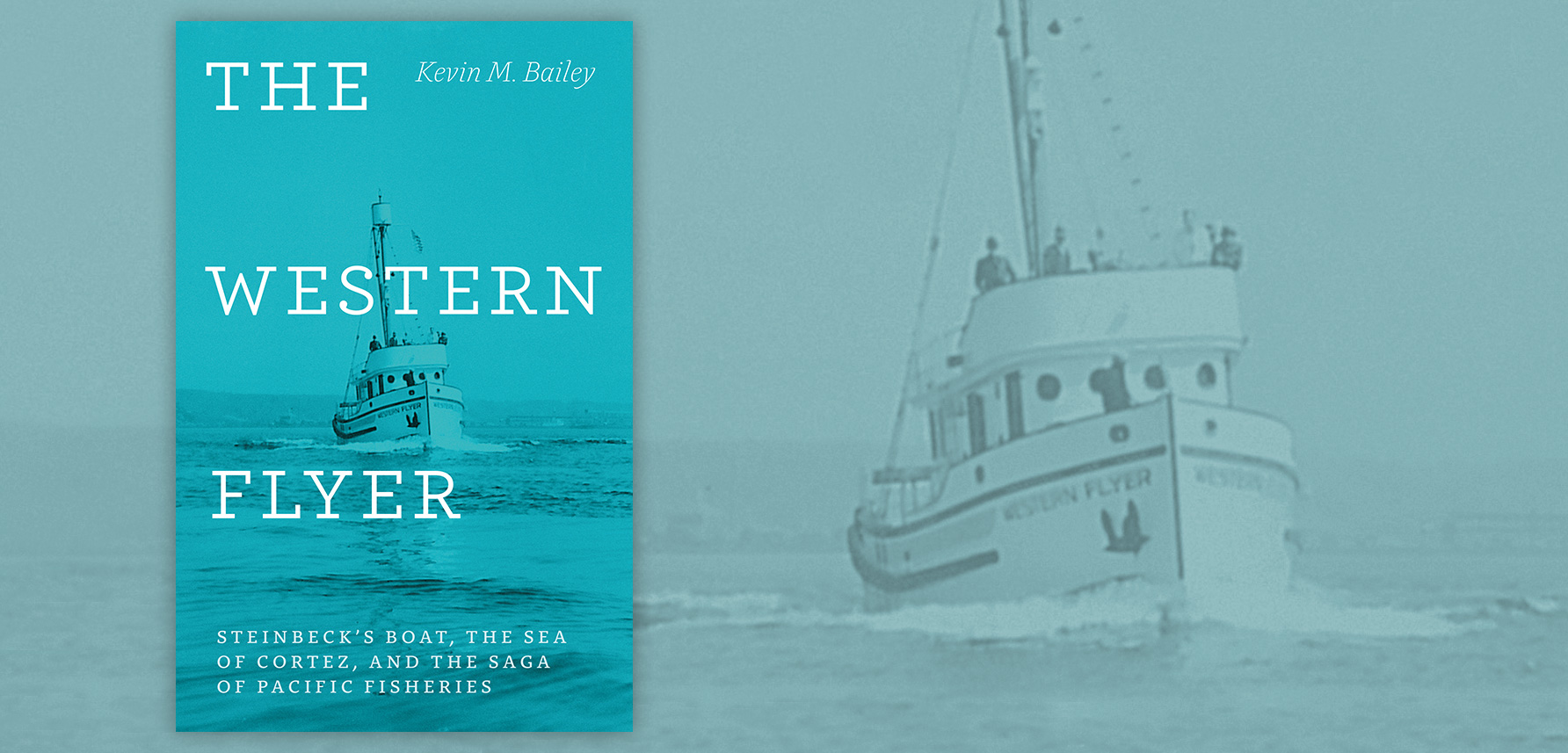Book Review: The Western Flyer
Whatever happened to the boat that starred in John Steinbeck’s The Log from the Sea of Cortez?
Article body copy
On a recent drive back to British Columbia from Oregon, I had a decision to make near Port Townsend, Washington: (1) detour into the Boat Haven marina, find the Western Flyer (the legendary boat John Steinbeck immortalized in his book The Log from the Sea of Cortez), pay homage to its decrepit bulk, then carry on to the ferry terminal and wait four hours for my sailing; or (2) drive past the Port Townsend turnoff and catch the ferry that left at a decent hour.
If the above paragraph makes perfect sense, and the first option was truly the only option, you will like the book The Western Flyer by Kevin M. Bailey.
Bailey weaves the Western Flyer’s story—its inception at a Tacoma, Washington boatyard, its role in Steinbeck’s 1951 book, its years bobbing about the Pacific in search of fish, and its near demise (it sank, twice)—with the environmental history of the West Coast’s modern fishery, a tale of booms followed by bust after bust after bust.
As a big fan of Steinbeck; his friend, marine biologist Ed Ricketts; and The Log from the Sea of Cortez, I enjoyed following the ups and downs of this legendary boat. Steinbeck and Ricketts chartered the Western Flyer in 1940 to take them on an almost 6,500-kilometer, six-week journey to study marine life in the Sea of Cortez (the body of water that separates Baja California from the Mexican mainland). The Western Flyer’s Kardashian-like fame rests on the fact that it eavesdropped on the shenanigans of Steinbeck, Ricketts, the boat’s captain and crew, and, apparently, Steinbeck’s wife, Carol. (I had no idea; she’s not mentioned in The Log from the Sea of Cortez.) But fundamentally, the boat was a tool.
And Bailey portrays a typical, hard-working fishing boat. He also works hard to uncover the Western Flyer’s life apart from its celebrity status. Salmon, crab, and tuna flipped, skittered, flopped, and then stilled on its deck; its succession of captains wielded it with bravado or sold it out of despair. Bailey shows that the life of the Western Flyer mirrored that of the fishing industry, promising endless riches, yet, in reality, often facing a near-fatal decline.
Probably the best way to read The Western Flyer is on a boat, with not much else to do. The writing is adequate with moments of poetry, and the information stellar, but overall it’s overshadowed by the beauty of The Log from The Sea of Cortez and by Steinbeck’s voice, a voice that resonates so passionately with readers: “How deep this thing must be, the giver and receiver again; the boat designed through millenniums of trial and error by the human consciousness, the boat which has no counterpart in nature unless it be a dry leaf fallen by accident in a stream.” And it is this voice, his words, and the mythology of Steinbeck, that has called fans to Boat Haven in search of a battered old tub, a boat that—when I asked where to find it—was referred to as “the ugliest boat” in the marina.
The Western Flyer: Steinbeck’s Boat, the Sea of Cortez, and the Saga of Pacific Fisheries
By Kevin M. Bailey
184 pp. The University of Chicago Press

